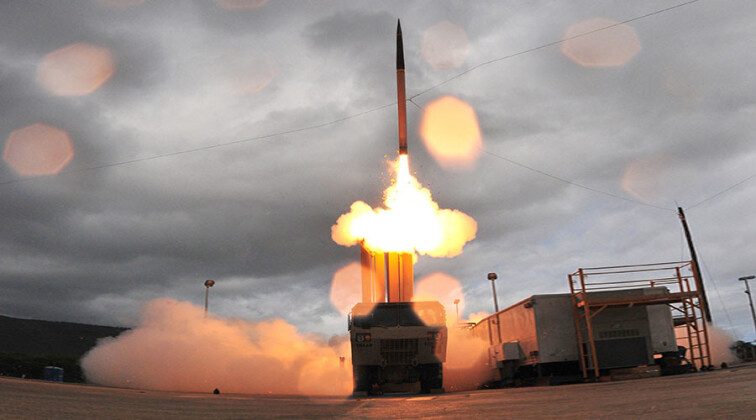News
U.S. Patriot and THAAD Air Defences Redeployed to Support Israel: Can They Counter Iranian and Hezbollah Strikes?

The Pentagon announced on October 21 that the United States had deployed new high and medium altitude air defence systems to the Middle East, with the report coming 14 days after the outbreak of full scale hostilities between Israel and the Palestinian militia group and political party Hamas. Defence Secretary Lloyd Austin stated that the military had “activated the deployment of a Terminal High Altitude Area Defense (THAAD) battery as well as additional Patriot battalions” in several undisclosed locations in the Middle East to increase the protection of U.S. forces, with the decision made after “detailed discussions” with U.S. President Joe Biden “on recent escalations by Iran and its proxy forces across the Middle East.” The overall effort was intended to provide greater support for Israel, and further U.S. forces had also been ordered to be ready to deploy “as part of prudent contingency planning.” The United States massively expanded its military presence in the region in the ten days following the outbreak of hostilities, including deploying two strike groups led by nuclear powered supercarriers, a Marine Rapid Response Force built around the aircraft carrier USS Bataan, A-10 attack jets and F-15E strike fighters among other assets. B-1B bombers were also forward deployed to the United Kingdom placing them comfortably within range to launch strikes against targets in the region.
Israel’s air defences have faced greater pressure than any other area of its armed forces over the past two weeks, with the U.S. Military restocking surface to air missiles for its Iron Dome system and donating its only two Iron Dome units to the Israeli Defence Forces. While the rocket artillery systems used by Hamas remain very limited in their capabilities, the possibility of strikes by far higher end and more numerous asset classes remains significant should the Lebanese paramilitary group Hezbollah enter the war, and moreso should the Iranian Revolutionary Guard Corps do so. With American military facilities in Syria and Iraq coming under increasing pressure due to sporadic attacks by local militia groups, many of which also have ties to Iran or Hezbollah, the possibility of a wider regional war pitting the U.S., Turkey and Israel against Iran and its allies would see American bases targeted in much larger attacks. Iran previously launched limited strikes against an American military facility in Iraq on January 8, 2020, in retaliation against the CIA’s assassination of Iran’s most decorated general Qasem Solemani, with the strike causing 109 American casualties.

The THAAD system was designed specifically to counter high altitude ballistic missiles like Iran’s intermediate range Khorramshahr and Shahab-3, while the Patriot is well optimised to engaging targets flying at shorter altitudes which are very widely fielded in the Iranian, Hezbollah and Syrian arsenals. Iran has built up a potent missile force with North Korean support, with the first exports of Korean missiles beginning in the early 1980s and major technology transfers and licence production deals having been initiated since. No parties in the Middle East are thought to field a system comparable to the Korean KN-23, or its Russian equivalent the Iskander, which are tactical ballistic missiles using semi ballistic irregular trajectories that make them nearly impossible to intercept for systems like the THAAD and Patriot. Iran has nevertheless developed a range of sophisticated countermeasures to increase its arsenal’s survivability, and in June 2022 the country unveiled its first ever ballistic missile integrating a hypersonic glide vehicle – shortly after North Korea began to field very similar missiles. These kinds of assets, combined with the sheer quantities of missiles Iran and its allies field, and perhaps above all the lack of reliability of the Patriot system in particular during prior combat tests, all indicate that the new assets’ ability to significantly reduce the vulnerability of American forces in the Middle East will likely remain limited.












